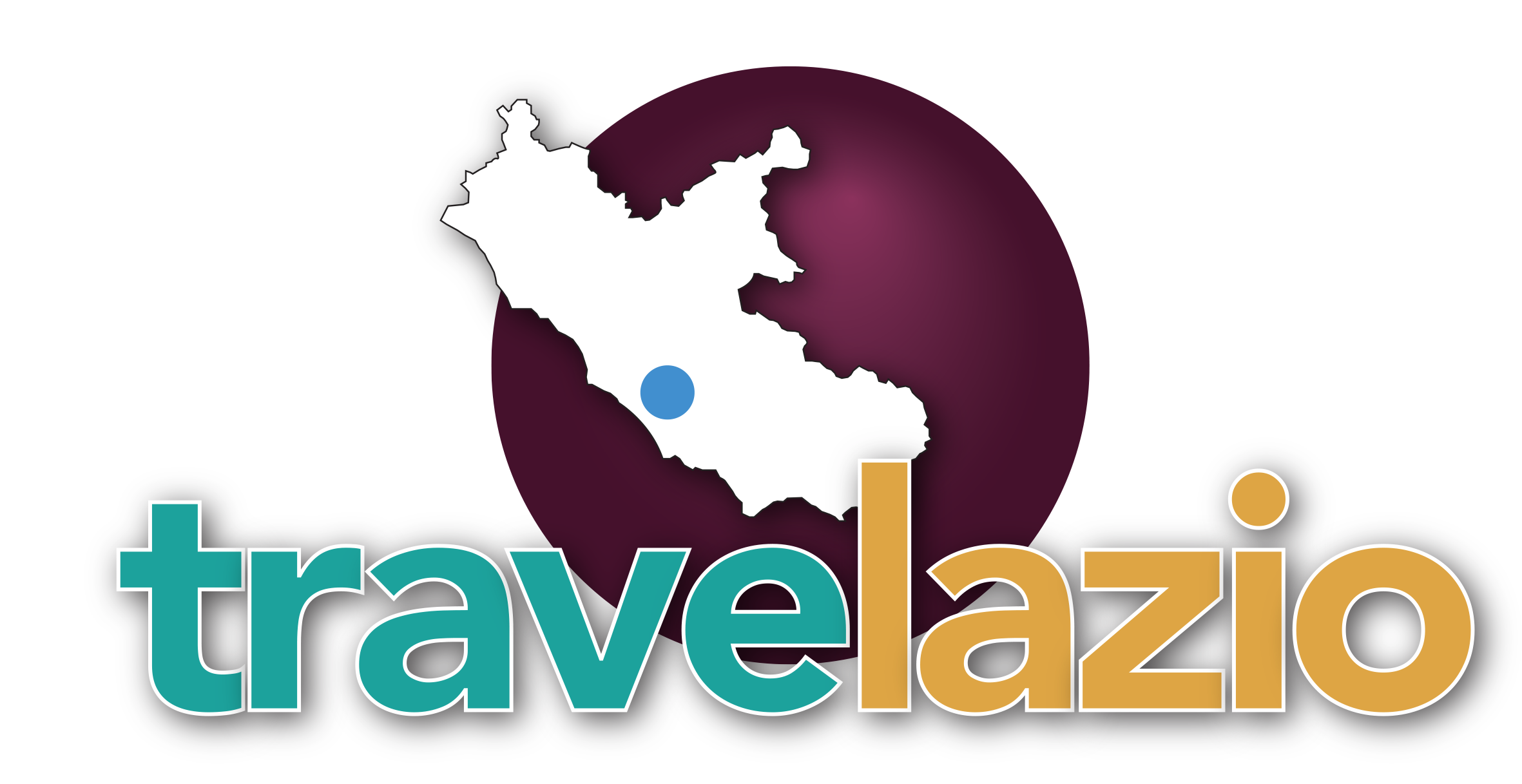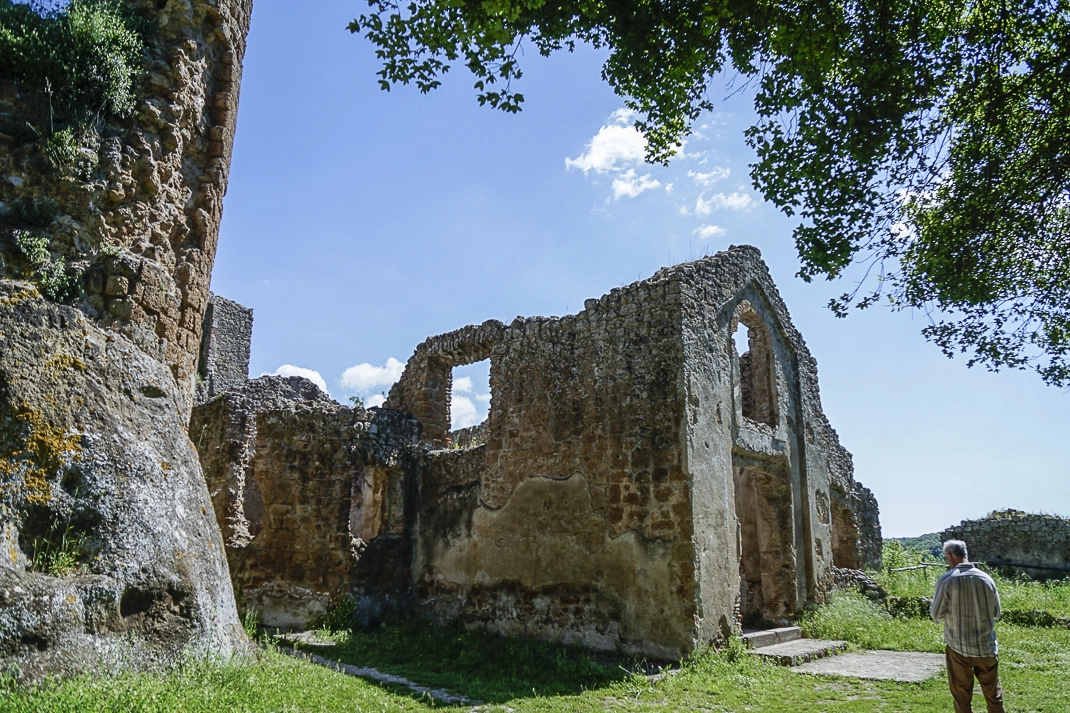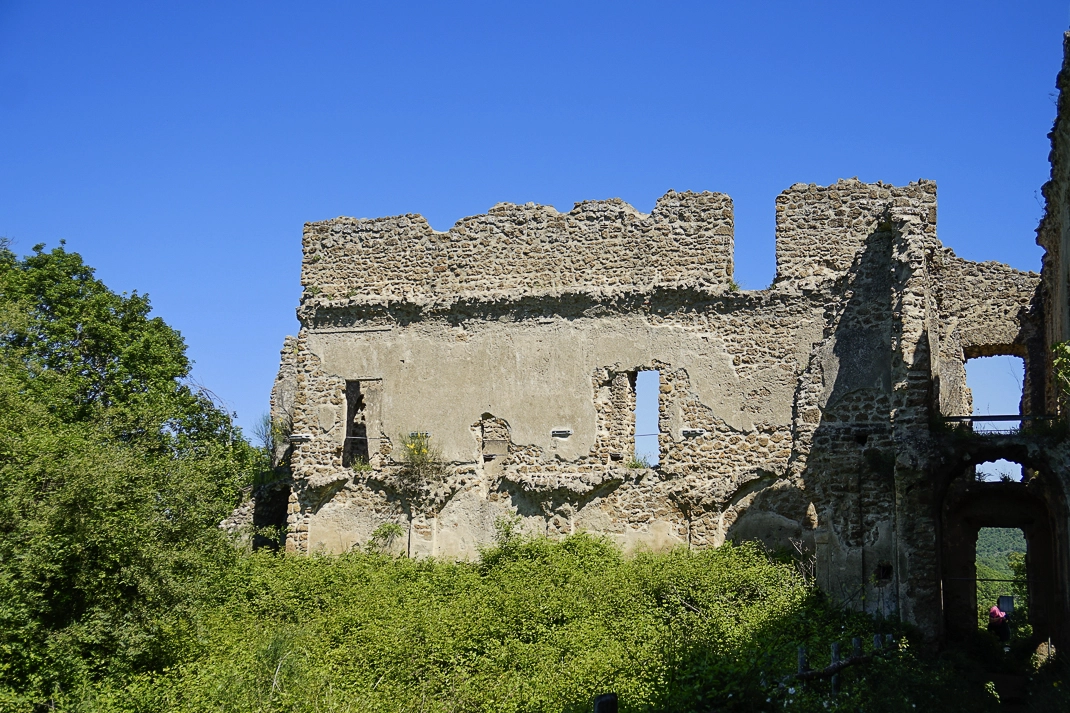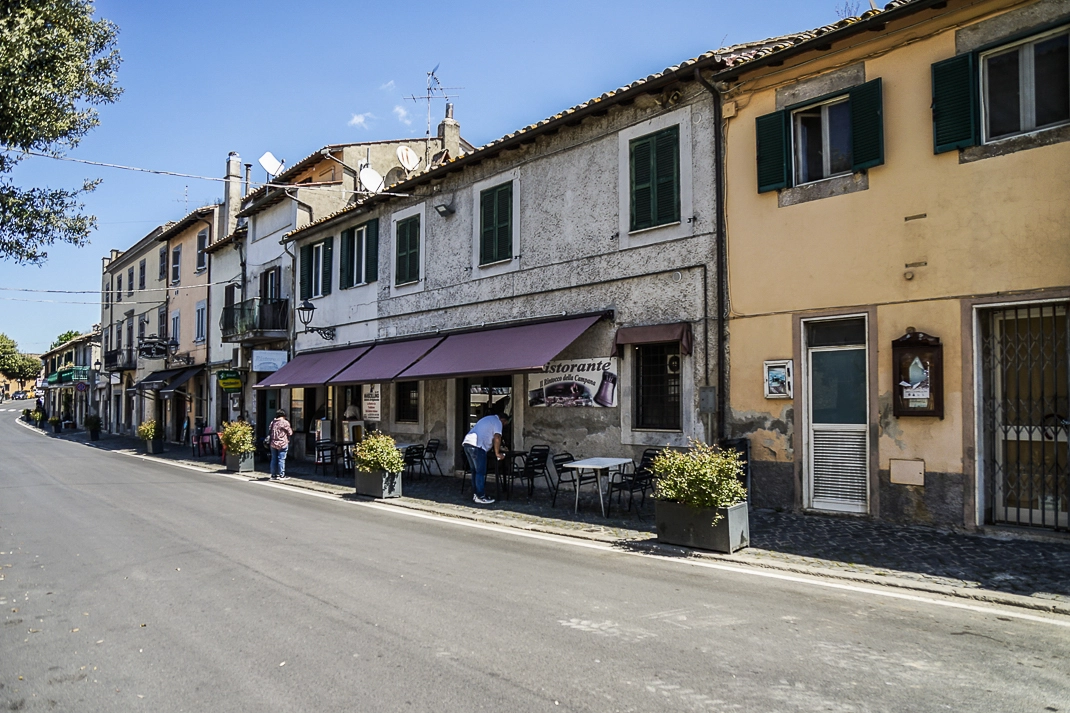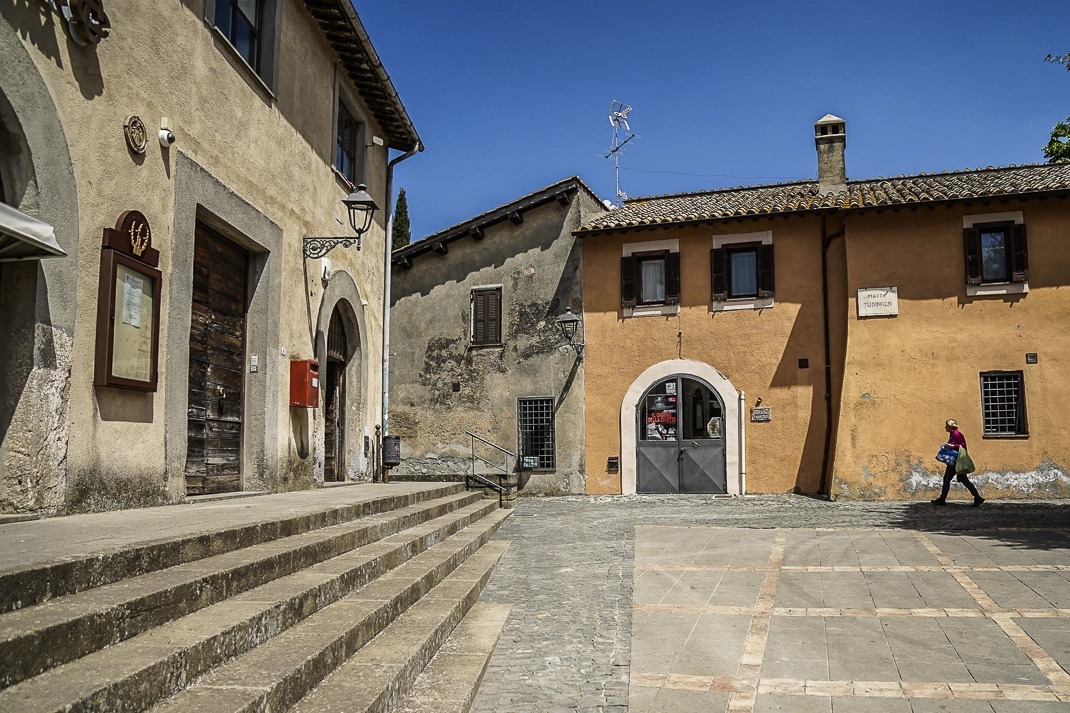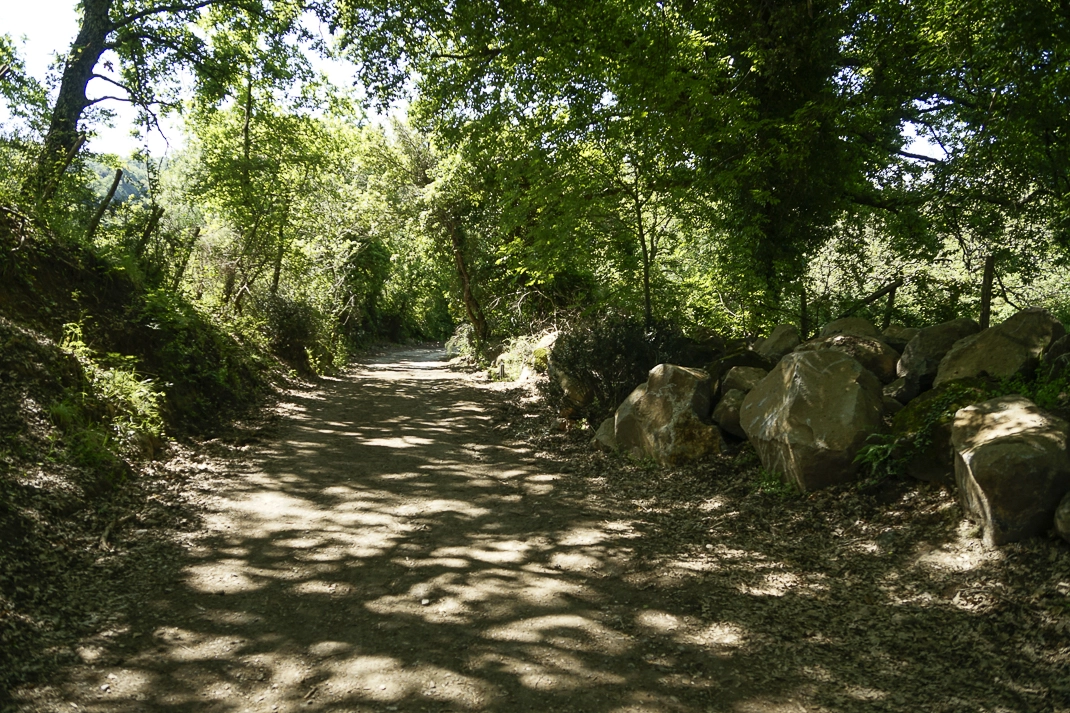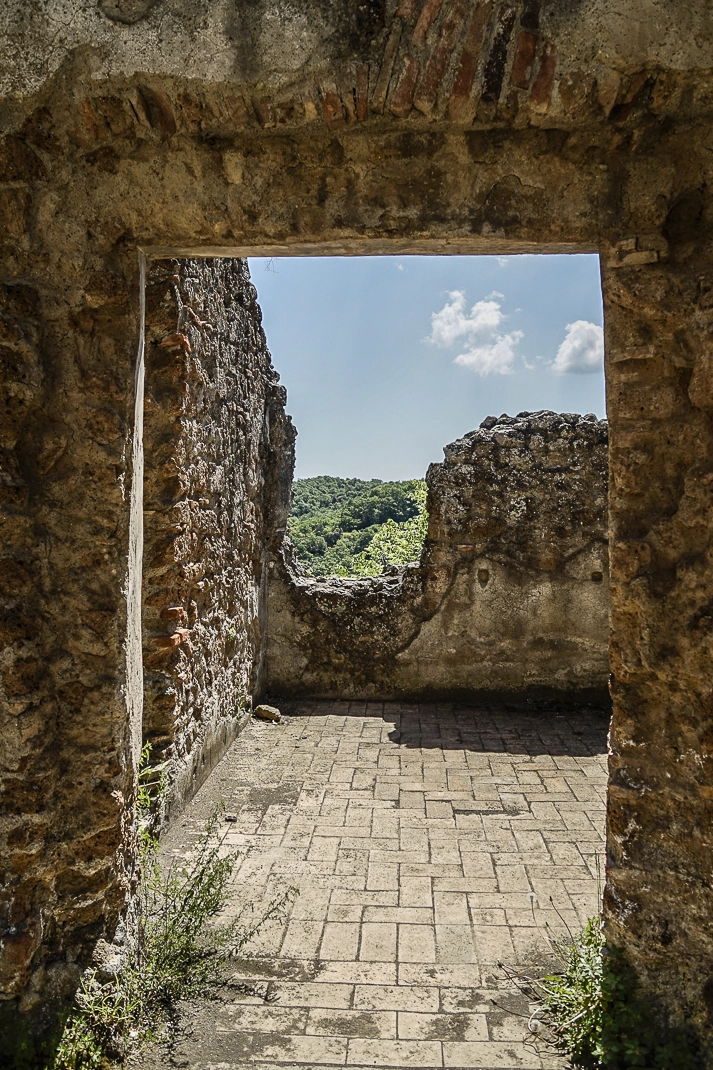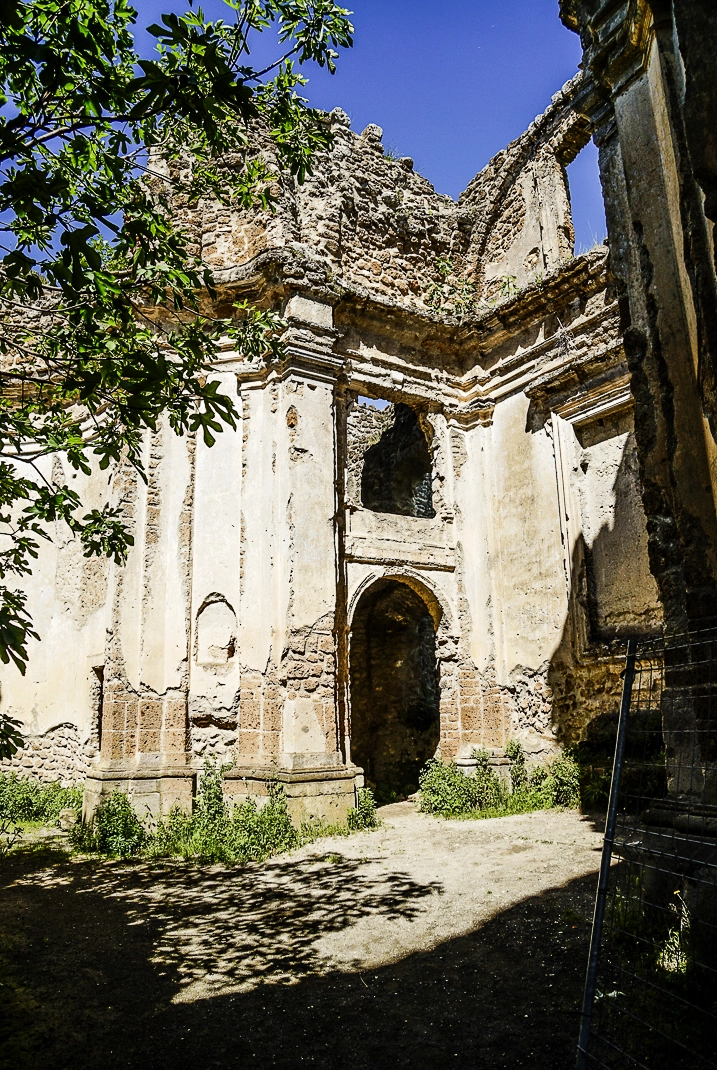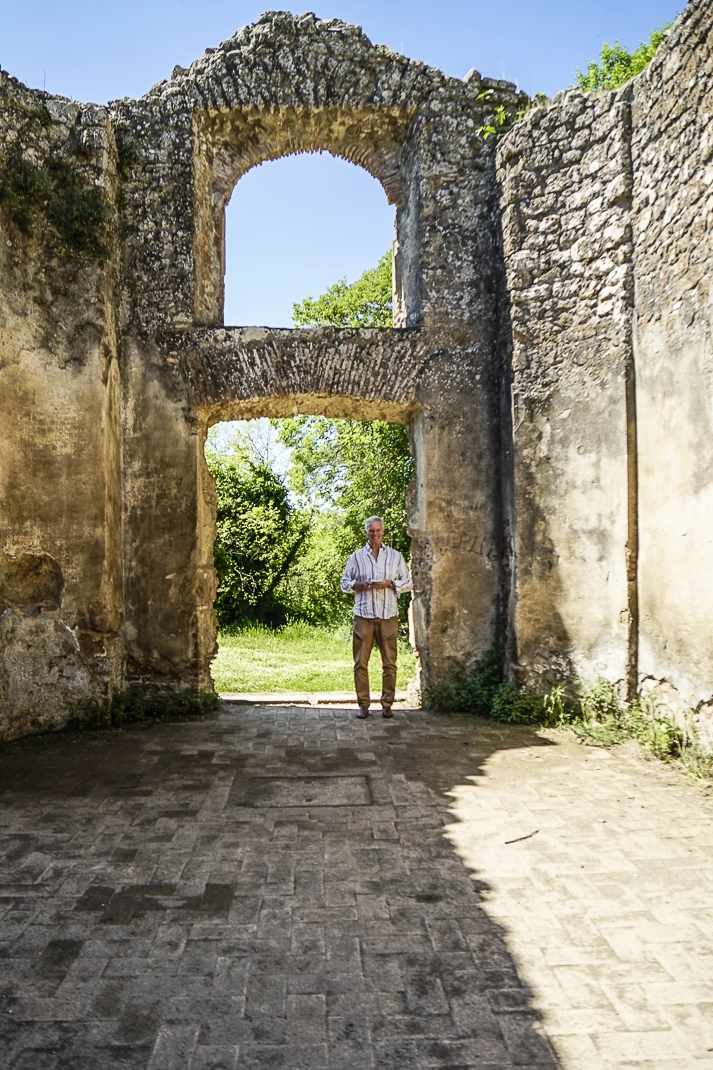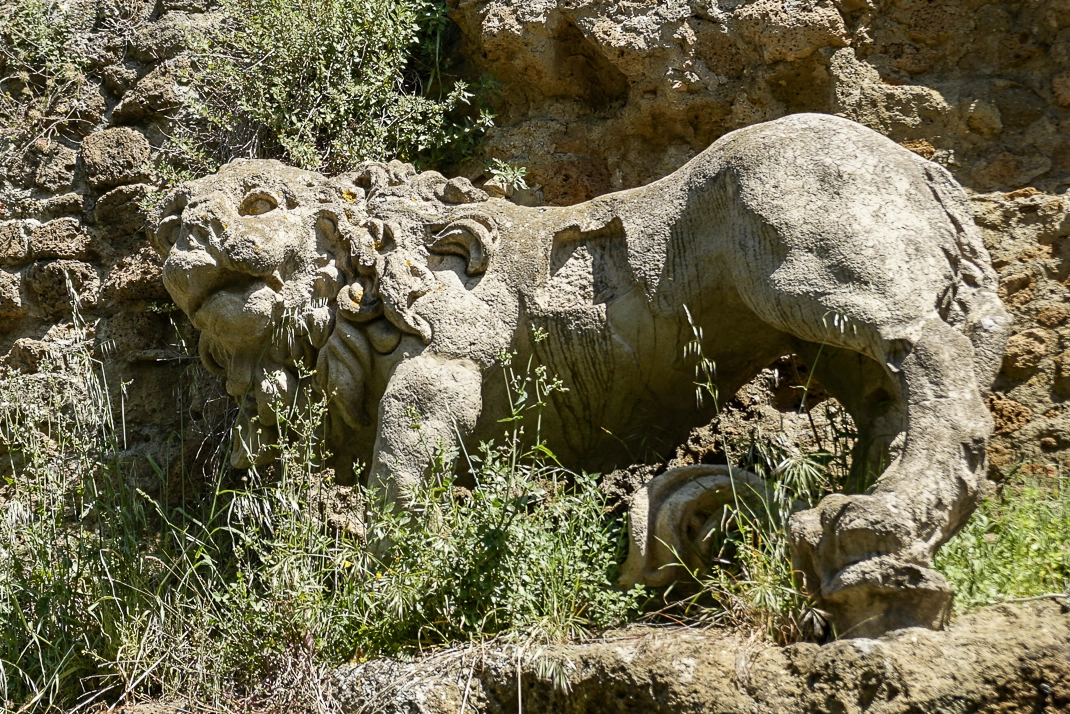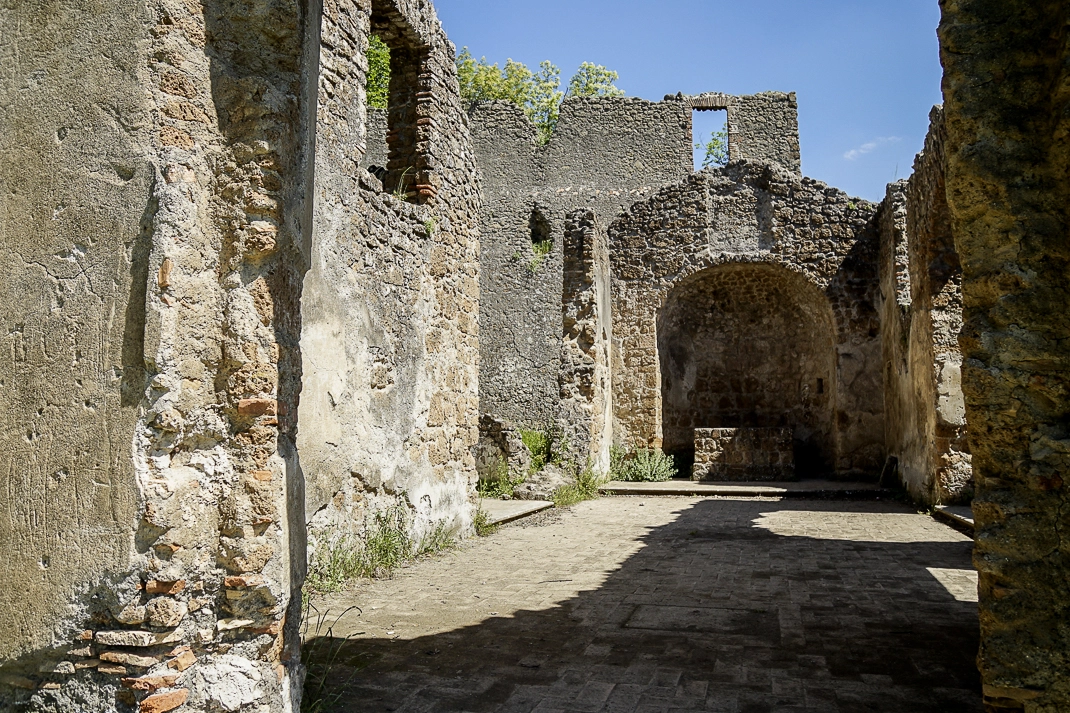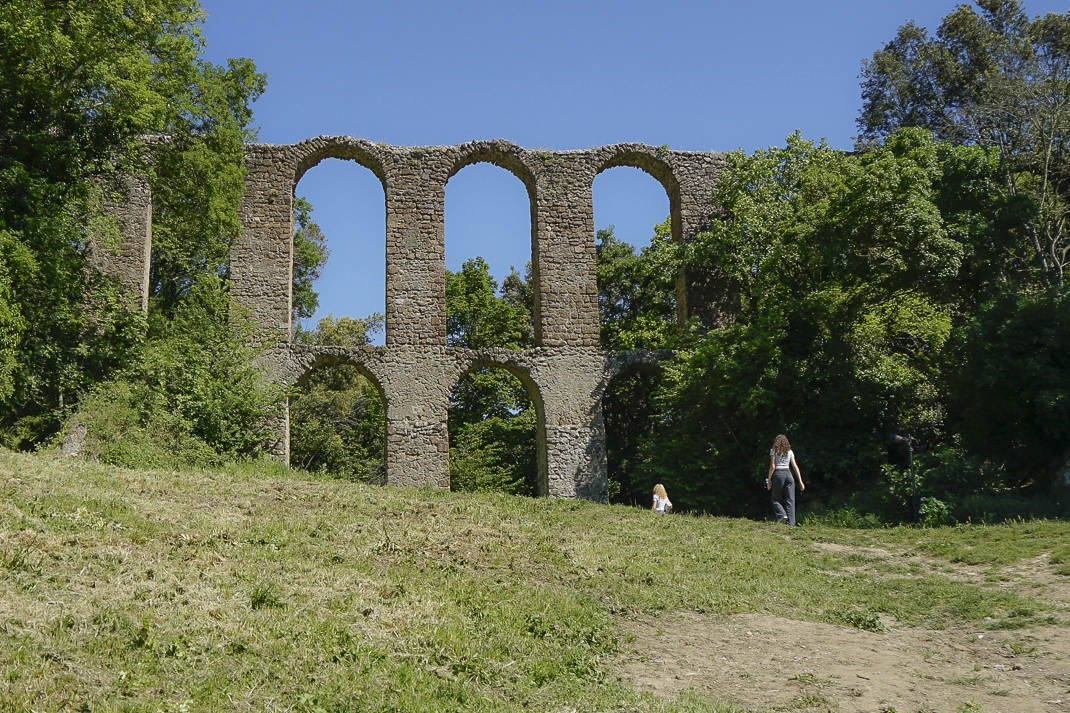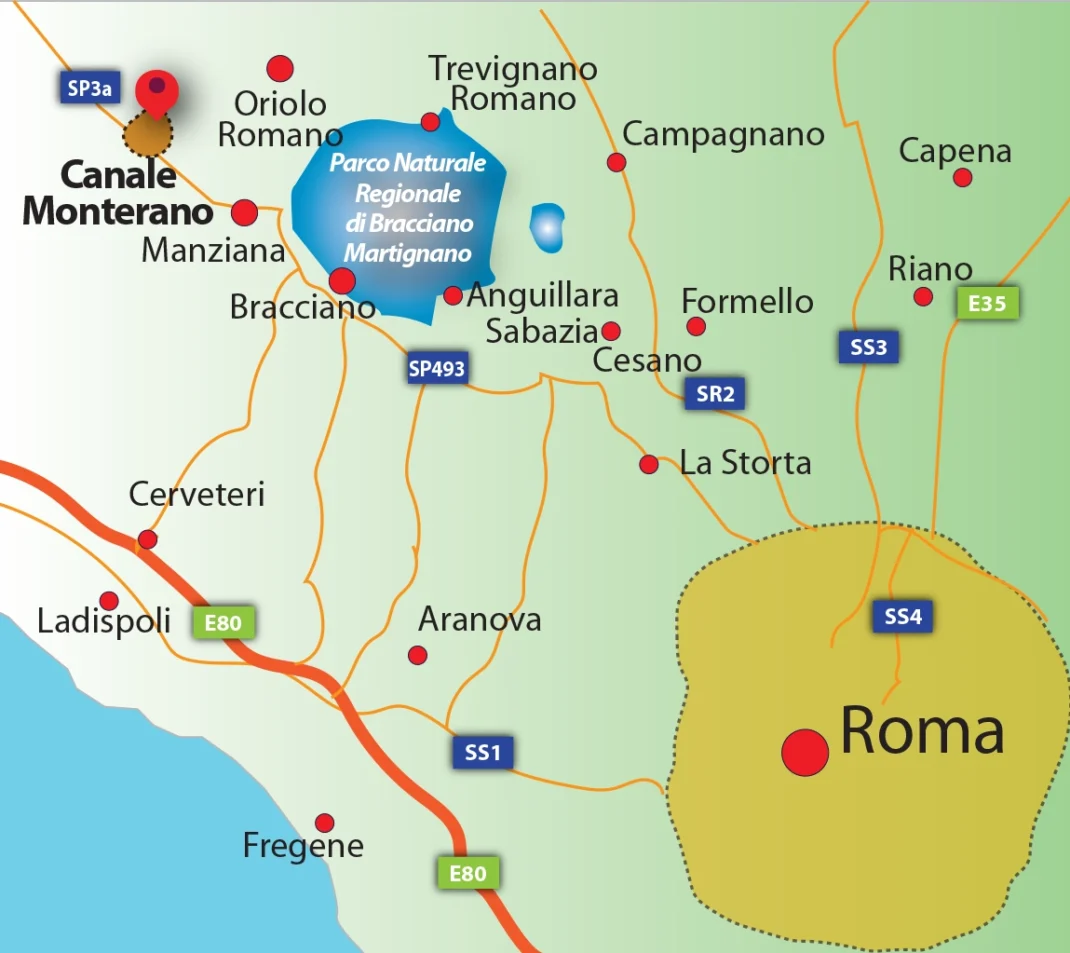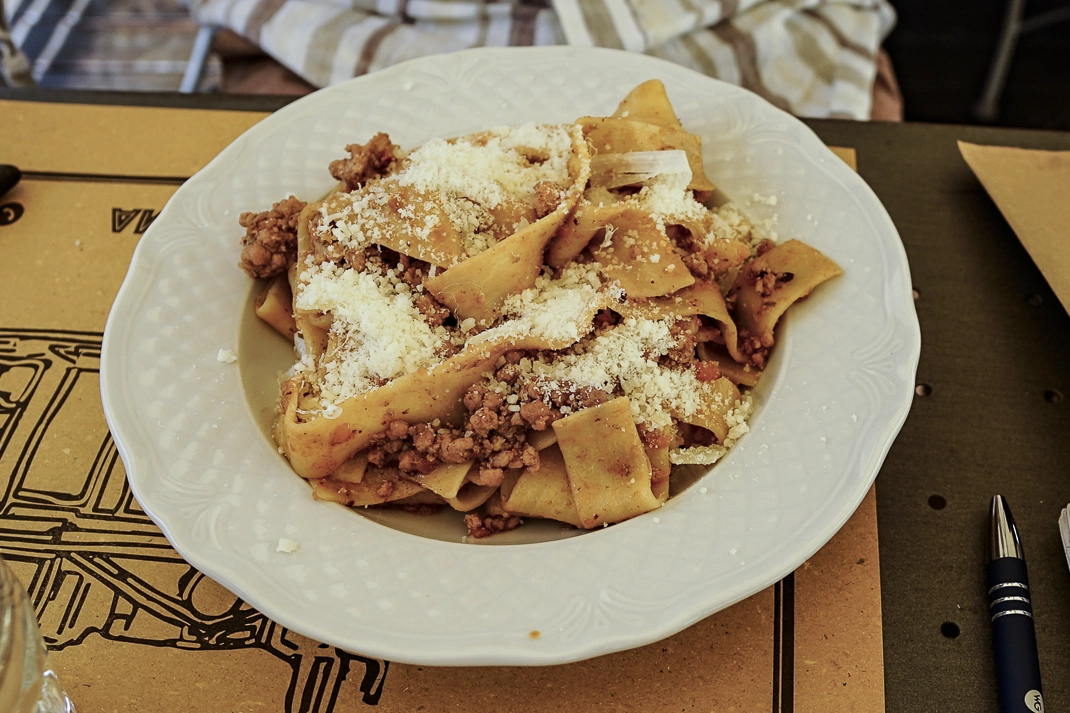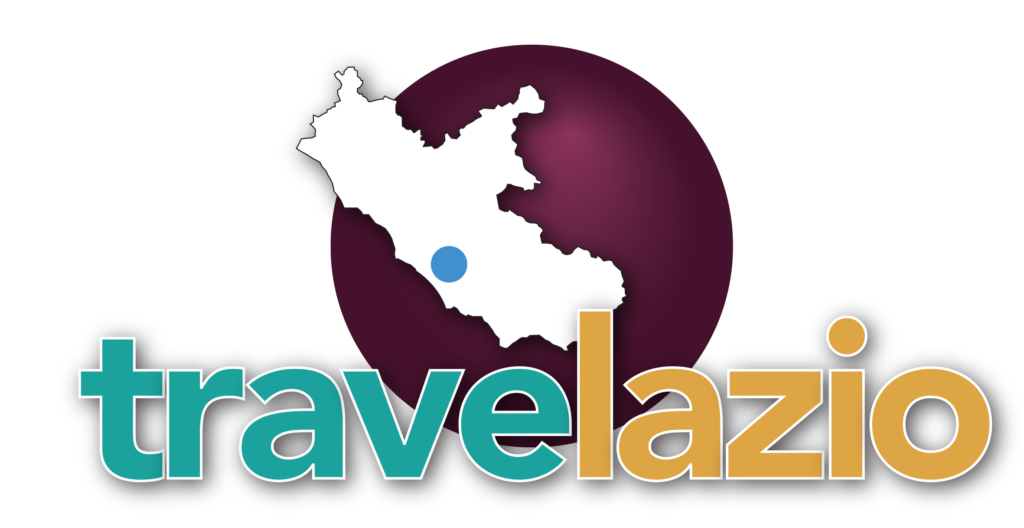

Monterano: Napoleon’s troops came,
conquered and left a ghost town
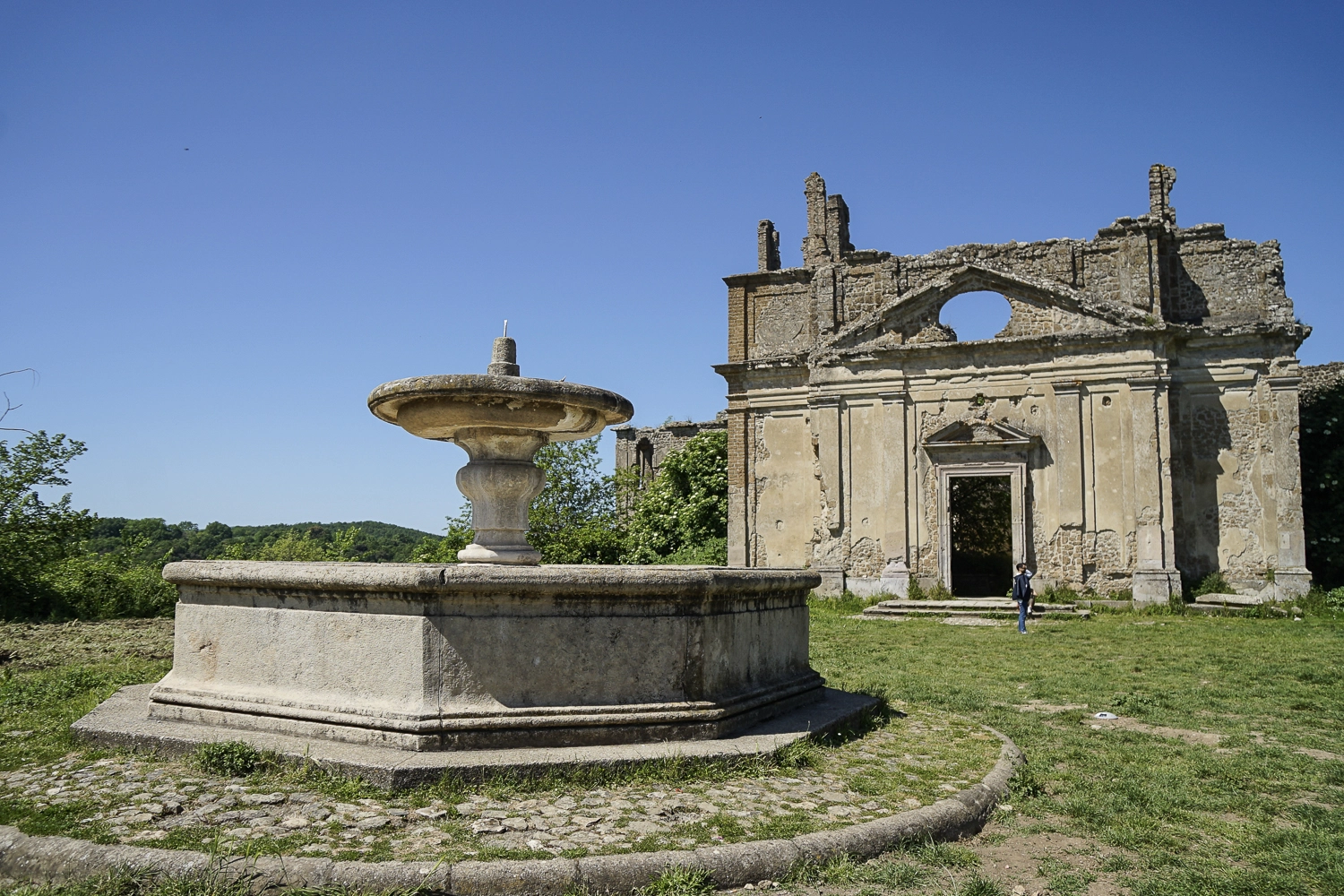
There are two Monteranos: One is a modern town of 4,000 people called Canale Monterano, with a quiet, charming main drag and some terrific trattorias. The other one, the first Monterano, is 2½ kilometers (1½ miles) away and is a shell of its former self. Literally, a shell.
This Monterano is a ghost town. Established in the Bronze Age, Monterano was a working village rich in sulphur. But Napoleon’s French troops invaded Rome in 1798, taking power from the pope. They soon roamed the countryside and pillaged Monterano, which was already beset by malaria and a civic conflict with the nearby town of Tolfa. The French burned Monterano to the ground. Instead of rebuilding, the remaining residents all left and the town remains pretty much unchanged. Many ruins still exist and are in pretty good shape. It’s an excellent free destination where you can enjoy the beautiful surrounding forest.
Then go to Canale Monterano nearby and have a nice lunch with some Lazio wine. Monterano is one of the most underrated tourist attractions in Lazio and still a site of spiritual retreats.
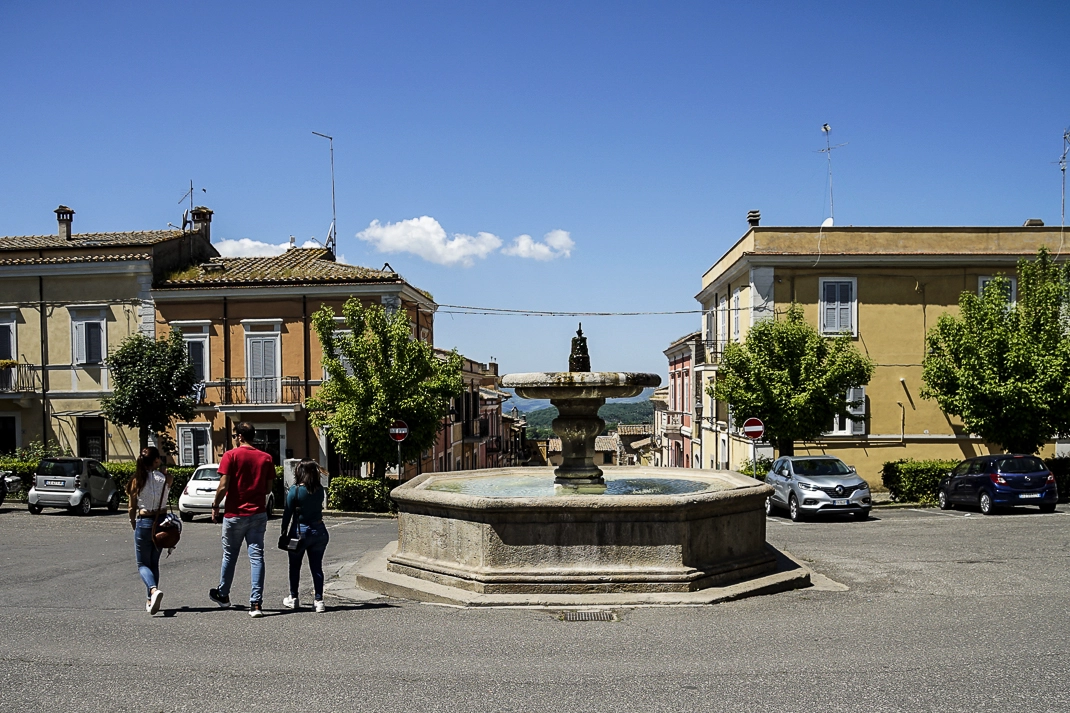
Things to do
1 • Hermitage. The highlight of Monterano is the remains of a huge convent at the end of the 800-meter walking trail from the parking lot. It was once the St. Bonaventure Church. Built in 1679, it served as the Convent of Discalced Carmelite Fathers and it was huge. The entire front facade of the Renaissance building remains. It stands about 40 feet high with a 15-foot door.
It’s topped by an A-frame with a hole in the middle where there was likely the convent sign. A dry fountain, designed by famed Renaissance architect Gian Lorenzo Bermini, remains out front. Enter the door and on the left is a maze of walkways and arched entryways.
You can see the back end of the building and another two-story structure on the right side. The ghost town is part of the 1,100-hectare (2,720) Monterano Regional Nature Reserve and in the back of the hermitage you get a panoramic view of the surrounding forest in a half dozen shades of green.
2 • Ghost town center. Above the trail you take to the hermitage is another that leads up a short hill. Here is where the main town of Monterano stood. Still standing are the massive walls of the former ducal palace. It’s built on the site of the 12th century Orsini-Alteri Castle which also housed the Cathedral of Santa Maria Assunta.
In 1679, Bernini was commissioned to redo the castle into a palace. Along the way he built a statue of a lion above a fountain. Its paws are clawing the rock from which the water pours. The Fontane del Leone still stands but it is dry and full of weeds. Enter the palace and you can see the space of the former church which includes a curved altar.
At the back end of the palace is an even better view of the surrounding forest. Research it before you leave. There are no signs of explanation about the history.
3 • Aqueduct. The first ruin you’ll come to on the trail is the remains of an Ancient Roman aqueduct. The Romans were master engineers and built a series of tall stone bridge-like structures that carried water from the surrounding Sabatini Mountains into Rome and surrounding areas.
Monterano’s aqueduct still has six arches hovering over a fountain with four spigots, one of which delivers a continual stream of cold, fresh water. The aqueduct leads to the ghost town and it’s clear the town was large. The remains of what looks like a house is above a brick wall near the aqueduct. Also nearby are a series of caves that look like Bronze Age dwellings.
Napoleon in Italy
After France appointed Napoleon Bonaparte commander in chief in 1796, he took his campaign to Italy where he dismantled the Papal States, while Napoleon never did see Rome, a city he’d always dreamed of visiting, he did send 9,000 troops under General Louis-Alexander Berthier to the city in 1798. Pope Pius VI refused to surrender and was exiled into France where he eventually died in the town of
Valence. Napoleon dissolved the Papal States soon thereafter and established a Roman Republic, the first since before the Roman Empire.
The next year, however, the Republic of Naples invaded and after the loss of 8,000 Neapolitan lives and 1,000 French troops, they established the Parthenopean Republic inside the Kingdom of Naples.
Cardinal Fabrizio Ruffo then sent 17,000 soldiers into Calabria to re-establish the Roman Monarchy. In late 1798 and through most of 1799 while Napoleon was in Egypt, 60,000 French troops fought Austrian
troops in Northern Italy, a long drawn-out battle that eventually led to the Treaty of Armistice in 1801.
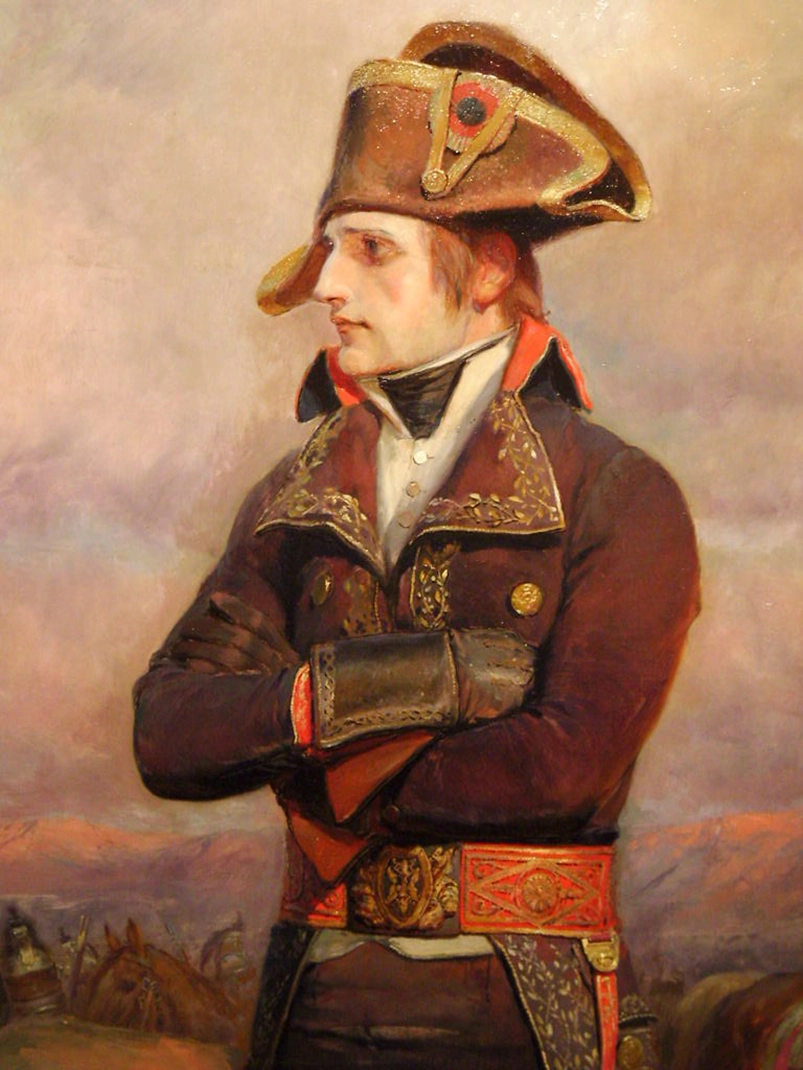
Where is it:
60 kilometers (25 miles) northwest of Rome.
How to get there: It’s best to drive. You can take a Cotral bus from Rome’s San Paolo del Brasile in Rome’s Villa Borghese for Canale Monterano on some days for €2-€7. However, it is more than three hours with a nearly two-hour layover in La Storta.
Also, Canale Monterano is 2½ kilometers from the ghost town and is a difficult walk. By car it’s one hour from Rome and there’s a large convenient parking lot at the start of the reserve.
For more information:
Ufficio Turistico, Piazza Tubingen 3, 39-996-2401,
www.comune.canalemonterano.rm.it/vivere_il_comune/luoghi/luogo_14.html
info@comune.canalemonterano.rm.it. Currently not open to the public but the website has information.
Where to eat:
comes to your outdoor table under a canopy and tells you the dishes of the day. I had the best pappardelle al cinghiale (wide flat noodles in wild boar sauce) I’ve had in Italy. Lunch for two with local Allumiere wine was only €29.
